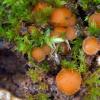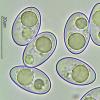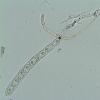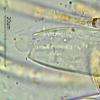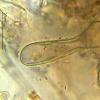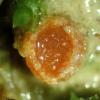
16-03-2014 22:00
Hello,I found this species a few months ago but ha

08-12-2025 13:39
Thomas Læssøehttps://svampe.databasen.org/observations/10572899

07-12-2025 16:07
Arnold BüschlenHallo, ich habe in einer Moos-Aufsammlung (epiohy

05-12-2025 17:33
 Bruno Coué
Bruno Coué
Bonjour, je serais heureux de recueillir votre avi

07-12-2025 09:24
De la pasada semana en Galicia EspañaEn el suelo

06-12-2025 00:19
 Viktorie Halasu
Viktorie Halasu
Hello, would anyone have this article, please? An
Otra Octospora
Rubén Martínez-Gil,
02-12-2014 22:07

Hola a todos.
Subo fotos de una Octospora encontrada ayer, entre musgos, en una finca de cultivo de olivos.
Miden hasta 3 mm de diámetro.
Esporas de 17,5-22 x 11,5-13,5 micras.
¿Qué os parece?
Gracias por su ayuda.
Rubén
Rubén Martínez-Gil,
02-12-2014 22:36
Marcel Vega,
03-12-2014 08:15
Re : Otra Octospora
Hola Ruben,
no es O. grimmiae y no es Grimmia pulvinata.
Puede ser O. gyalectoides pero no soy seguro, tu otra Octospora es O. gemmicola.
Saludos,
Marcel
no es O. grimmiae y no es Grimmia pulvinata.
Puede ser O. gyalectoides pero no soy seguro, tu otra Octospora es O. gemmicola.
Saludos,
Marcel
Jan Eckstein,
03-12-2014 08:25
Re : Otra Octospora
Dear Rubén,
in my opinion, you found Octospora gyalectoides (=crosslandii). The spores are typical for that species. The apothecia margin is variable in O. gyalectoides and Benkert (2007) pointed out, that O. gyalectoides probably represents a complex of several species without sufficient morphological differentiation for recognition.
Your arrows show a Pottia, but Didymodon and Pseudocrossidium are also present on your photo. However Pottia is the most common host for O. gyalectoides.
with best wishes
Jan
in my opinion, you found Octospora gyalectoides (=crosslandii). The spores are typical for that species. The apothecia margin is variable in O. gyalectoides and Benkert (2007) pointed out, that O. gyalectoides probably represents a complex of several species without sufficient morphological differentiation for recognition.
Your arrows show a Pottia, but Didymodon and Pseudocrossidium are also present on your photo. However Pottia is the most common host for O. gyalectoides.
with best wishes
Jan
Rubén Martínez-Gil,
03-12-2014 15:08

Re : Otra Octospora
Muchas gracias por su ayuda, Marcel y Jan.
Un saludo
Rubén

